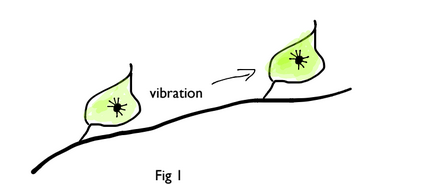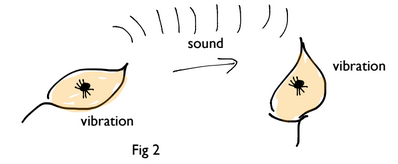The wind dropped and the cat and I
Ran in the cornfield.
Not ripe yet though.
The wind dropped and the cat and I
Ran in the cornfield.
Not ripe yet though.
Tonight I stopped at the gate.
Every leaf was singing, every bough was dancing.
In that gale.
Further off I heard a deeper and an older roar.
My transliteration of an Anglo-Saxon riddle.
Green and growing.
Tugged suddenly from bed.
Making her cry on the chopping board.
Pleasing her when cooked.
What am I?
Spring clouds,
I reached up to grab you.
But you ran away laughing.
I found this rather showy (indeed gallant) flower on a roadside near where I live.

It is viper's bugloss.
The bugloss part comes from its rough stem and leaves - bugloss means ox-tongue from Greek bous + glossa. The viper component is because the plant was once thought to be sovereign against snakebite.
Culpeper's Herbal of 1653 says
"It is an especial remedy against the biting of the Viper, and all other venomous beasts, or serpents."
Why did people believe this? Had it been found, by accidental trial and error that the plant worked against snakebite and so its use for this purpose became part of local tradition? Does in fact save people from death by snakebite?
No, the reason seems to come from the Doctrine of Signatures. According to this concept, which goes back to antiquity, plants with medicinal uses bore signs that indicated what they were good for.
So for example the leaves of lungwort were thought to look like diseased lung tissue, showing that it would be good for lung ailments.
This notion seems odd to modern thought, but it's based on a belief in providence: these plants had been put there by a creator, or perhaps just by nature, but for a purpose - to help humankind - and so the plants should be labelled - as the products in a supermarket aisle should be. For me the hardest bit is imagining that the world was created solely for us. That seems so unlikely and species-centered. But we are using modern thought and it's fairly easy to at least empathize with a different mindset.
So following the DOS, the stems of viper's bugloss are speckled, something considered characteristic of snakes (think of the Sherlock Holmes' tale The Speckled Band) and so the herb is marked as a snakebite remedy.
Culpeper offers several other uses for viper's bugloss, for example as a cheery pick-me-up.
"There is a syrup made hereof very effectual for the comforting the heart, and expelling sadness and melancholy."
I could do with some of that but I'll wait for proper testing!
I'll keep my hair long
To feel the wind blow through it.
So many lost thoughts.
When I went to the dentists they told me the real name for plaque is "calculus".
'Oh, I said brightly, "that's the Latin for 'pebble'". They seemed unimpressed by my erudition.
It seems that plaque is not necessarily a disease of modern living though, and it has been found on 50,000 year old Neandertal teeth. So it's persistent stuff.
Traces of plants were found in the plaque. Read more here or see a gruesome image (plus some good information from a volunteer science writer) here.
Other primates also suffer.
Some kinds of spider can communicate with others of their species (for threat or courtship) by vibrations, as I've tried to sketch in Fig 1 below.

However they can't, as far as I know, hear sound that is carried through the air, in the way many land dwelling animals do.
But research suggests one spider does use sound indirectly, in a way that reminds me a bit of the "baked bean tin telephone'.
You may know this, but if not, the idea of this improvised communication device is you get two empty tin cans, punch a small hole through the base of each, and then use a string knotted at both ends to connect the cans. The cans are held so the string is tight and then one person holds their can to their mouth, the person at the other end holds their can to their ear. When the first person speaks quietly, the listener can hear them, even over some distance.
This works because sound at one end is converted into vibrations in the string and at the receiving end the tin can resonates, and the vibration becomes audible sound again.
The "purring wolf spider" reverses the baked bean tin trick. One spider stands on a leaf (I think it needs to be dead so it will rustle) and generates vibrations, and vibrating the dry leaf produces sound (which is audible to humans).
The sound causes nearby leaves to resonate in sympathy, and a spider standing on one will feel the vibrations, Fig 2.

Where does Prufrock come in? Well it seems the female spiders on their leaves are the most responsive to the sound and so it may be a courtship song.
Learn more here.
Beetle you're a neon sign.
Why show off so much?
Spring happiness.
Toward home I paused.
Smelling lilac.
Everyone has a last summer.
I'd like to die
In a forest at daybreak.
But I don't want to be cold.
So please give me a blanket.
Stone tools seem to go back further than we realised. There's a BBC post about it here but personally I think the Nature abstract puts the facts very well.
Issa wrote many verses about cats. Here's one I like, a blog post from 1815, as you might consider it. His diary was like a kind of blog.
The kitten catches one
now and then...
fallen leaves.
See here for more,
Now it's Spring
That old cat is out again.
Guarding his lane.
More on birds
In English some common birds seem to have first names. Jenny Wren for example. Or Tom Tit.
In times past there were others. Some have become part of the modern name for the bird.
Jack Daw = Jackdaw
Mag Pie = Magpie
Some have replaced the original.
Robin = Robin Redbreast
Some survive amongst people interested in wildfowl.
Jack Snipe (I heard my father use this)
Some are archaic but once common.
Phillip Sparrow
Some may have been contrived in the early 19c. We can't tell.
Ralph Raven
And what's a parrot called?
There's some linguistic archeology here [1], with a few more examples. (Don't forget Dicky = Richard!)
Poet Script
Skelton [2] is a poet I have stubbornly tried to like for decades - and he from centuries back stubbornly tried not to be liked. See what you think of Phillip Sparrow.
[1] Archaeologia: Or Miscellaneous Tracts Relating to Antiquity, Volume 19.
[2] http://www.poetryfoundation.org/poem/174438
About five years ago, when traveling, I first heard "Spiegel im Spieigel". Perhaps you will know it but I didn't then.
Back home I learned it is by Arvo Pärt, a composer from Estonia. It is a minimalist piece, for solo piano and violin. Its peace and tranquility have made it famous. I listen to it most days.
It was featured in BBC 4 Radio program "Download this audio clip.Audio player: p02qhsdc.mp3 ". I find the episode very moving.
Twenty years had gone by.
She saw at once
I'd lost a tooth.
I've lost so many things
But got that scarf back.
Daisy
I feel tired now.
You've already closed, bless you.
Writing that fish can sing reminded me that mice also sing.
Reprised from this blog 2 April 2010 here is a clip of a mouse singing. This is a serenade to a female mouse.
Click hereAudio player: audioS1.mp3
It was at a much higher pitch originally and has been adjusted down to a range suitable for human ears.
Discussing the Shakespeare sonnet "That time of year" naturally made me think about the dawn chorus (of birds) and that led me on to something I'd forgotten about, the evening chorus (of fishes).
Fish can vocalize and on some coral reefs vast numbers of certain species "sing" at the same time of day. It's usually near nighttime and forms an underwater evening chorus. It may be related to feeding or reproduction, depending on the species.
Birds (and humans) sing according to the time of day (and year) but the singing behavior of some fishes is also affected by the phase of the moon.
More information is here.
Isn't that surprising? I wish I had been able to find a sound clip of fish singing but sadly not.
Go to bed old man.
Who cares anyway?
All this blah blah blah about winter.
Thinking and loving are not different.
When we look up we see a falling star.
I wrote before about Shakespeare's sonnet 73
is an example. In nine words (and 10 syllables) we are carried from "yellow leaves" (the poet lets us know it's autumn, a time of decay) through "or none" (everything is gone) to "or few" (not quite none, but going).
This economy is extraordinary, as is the whole poem with its metaphor of the seasons, the time of day, and the stages of a human life, all rolled into one, and the final plea to hold on tightly against the flickering light.
So my earlier and inadequate attempt to capture the sonnet in a Haiku needs some more work.
Should a verse be sweet? Or sour?
Hot or cold?
Today's food for thought.
This blog might contain posts that are only visible to logged-in users, or where only logged-in users can comment. If you have an account on the system, please log in for full access.